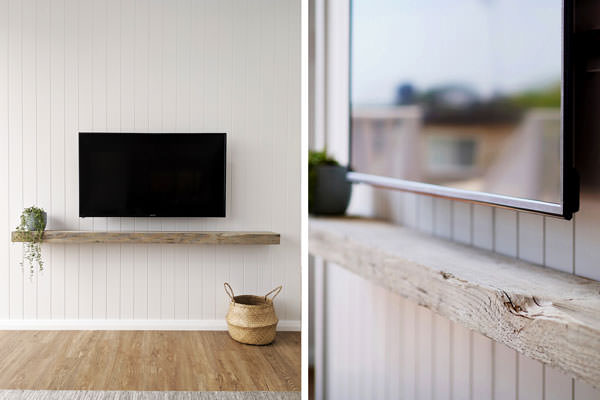
One thing you have probably noticed about granny flats is that their prices can vary a lot. As such, you may be considering a cheaper solution. So, what are your Budget Granny Flat options?
For a budget granny flat, you can choose from:
- Mobile granny flat on wheels
- Prefabricated (“flatpack” (kit) granny flats, or granny flat modular homes)
- Relocatable granny flats
- Mobile granny flat on wheels
- Second-hand granny flats
- Those that were used as display models, or
- Shipping containers
I will discuss the cheapest option; a granny flat on wheels. And how to save on building materials for a larger one.
DON'T PAY A FORTUNE FOR YOUR GRANNY FLAT. Find out how to deal with council and build a granny flat for the lowest cost possible. Learn More.
I’ll cover the legal possibilities for using a shipping container for a granny flat. Plus the pitfalls to look out for.
So lets jump right into it…
Shipping Container Granny Flats – What are the Legal Concerns?
Shipping containers have increased in popularity as a budget granny flat to build.
However, there are legalities to keep in mind if you choose to use them.

Shipping Containers – Beware of the choices out there
With the proper research and planning, shipping containers can be a great budget build.
The regulations to convert a shipping container into a granny flat include:
- Modifying it, so it is classified as “habitable”. Meaning, adding things that are necessities if you’re planning on making it a mini home.
- Doors, windows, fixtures, insulation, appliances, and plumbing.
Unfortunately, every time you make these changes to the shipping container, you are potentially making it frailer. So, you may also need to add reinforcement, especially when looking at used options.
- Firstly; you will be required to gain Council approval.
Nearly every Council will treat a permanent shipping container as they would any granny flat. But some Councils’ have their own rules about shipping containers. So, I recommend that you contact your Council first and find out their regulations.
While buying a shipping container sounds simple in theory, there is actually quite a bit to consider.
There are many different types of shipping containers – they can be seen in this shipping container article.
What type of shipping container you need is only part of the decision.
You’ll also need to think about what size you require:
- 10ft – Just a small cube design
- 20ft – The most common choice for modifications.
- 40ft – Quite large, so it may not meet Councils’ regulations regarding secondary dwelling setbacks.
Engineers are very cautious to issue a structural certificate for a used shipping container. These don’t come with a long record of their history, so they don’t know whether they’ve once stored dangerous goods.
They also don’t know whether it has been dropped, dented or hit in the past, causing structural damage. Rust will be another issue.
Advantages of a new shipping container are that they have no:
- Mysterious, questionable history, or
- Wear and tear from being loaded, unloaded, moved around, bumped in rough seas, etc.
So, although a new container may cost more – expect to pay at least $5000 – you have:
- More chance of meeting all requirements to gain approval for a granny flat. Without major headaches that could cost you more in the long run.
The Cheapest Solution for a Granny Flat Structure
Mobile homes (“on wheels”) are typically the cheapest option for granny flats.
Council will class them as “caravans”, so you can keep them on-site with little, or sometimes no approval.
Companies that supply these include:
- Flexihome – 0450 634 962.
- Colles Manufactured Homes – (02) 4353 3603.
- VanHomes – 1300 558 5123.
- Mobile Granny Flats – 1300 799 812.
For other affordable options, see my articles on:
- Prefabricated “flatpack” (also known as kit granny flats)
- Relocatable granny flats
- Used granny flats
- Granny flat modular homes
If you are interested in purchasing an ex-display granny flat, contact the team at Atlas Living.
You will also need to cover how to move a granny flat onto your site as well.
Ways to Save Costs with a Builder & How to Negotiate with Them
There are several ways to save money on labour when building your granny flat.
But first, it’s important to find a great builder, one that you can communicate with openly and honestly.
You should:
- Make sure they know exactly what your vision is, and priorities are, and
- Ask their advice on finding ways to save.
A piece of advice I received from a family member – a bricklayer – is to build during their off-season.
Like many industries, the construction business has busy and slow times each year.
You can save up to 15% by starting when contractors tend to be slow – in this industry it’s usually winter.
Not only can you save money, but the contractors are not as busy, so have more time to:
- Meet with you
- Answer your questions, and
- Go through your every line of your budget to see where you can save.
But know there is a reason for off-seasons. Contractors will work in the rain, but you must be prepared for exposure to the elements.
So, make sure you are ready for inconveniences that come with off-season construction, like more mess from mud and rain. Going back to meeting with the contractors – most will go over their construction schedule and break down all their costs.
This is the perfect opportunity to save. Sometimes, they assume you want things you do not.
When discussing your budget, question anything you do not understand. Some standard inclusions in their quote may just be decorative, not necessary.
So, if you don’t care about them, you can save yourself hundreds of dollars by removing them from the quote.
This is also your chance to find and decide which elements of the project that you can do yourself and discuss anything you want to source.
Whether you have completed a DIY task before or not, you can probably find a few tasks you can do on the construction list.
Contractors earn an average of $50/hr, so when you do some work, you’re saving these charges.
If taking on any portion of the construction, you must:
- Clarify your responsibilities from the beginning, and
- Communicate with the contractors frequently.
Because, if you didn’t have the air-conditioner by a certain date, it can delay the project and cost you. Also, be practical about your capabilities. If you can do something, it will save you.
But if you don’t know what you’re doing, it will probably end up costing you more, as you’ll have to pay a contractor to fix your errors.
Especially plumbing and anything electrical is best left to the professionals.
For ideas on a DIY project, feel free to read what I did when building my granny flat.
Ways to Save Cost on Building Materials – Where to Find Options Online
If you’re using a contractor, in your negotiations be sure to talk to them about sourcing your own materials.
Then, do this wherever possible.
Although at times tradies and subcontractors can get cheaper prices on things they purchase in bulk, (i.e paint), this can:
- Add to their hours when sourcing these products for you.
Overall, it is best to buy high-quality products for your contractor to install (new, not second-hand). However, this really depends on what you require. Sometimes you can be self-indulgent and others you can save.
For example, I suggest you go to retail for a new:
- Hot water system, and
- Air-conditioner.
For used items, such as:
- Flooring.
- Light fixtures.
- Interior Design Features

My granny flat – This simple piece of timber was found at a recycled material dump!
Check out Gumtree, eBay, and Facebook Marketplace. Or an online search for a ‘recycled building materials yard’ will give you many more options as well.
Also consider buying stock items, rather than custom-made, for some items, such as:
- Cabinets
- Bench-tops
- Shelves
Also think about the rooms on which to skimp or save.
2 rooms loved most by people are kitchens and bathrooms. They are typically also the most expensive areas to build.
However, consider spending money in these areas, so occupants or future buyers don’t feel the need to renovate. Money can be saved in the laundry as it’s not used for entertaining or relaxation.
Save money on rubbish disposal and reuse materials wherever you can.
For example, on off-cut of timber can be used as shelving.
Consider using these materials in your project, as they are some of the cheapest:
- Reclaimed timber – Although this is cheap and trendy, it can be a challenge to source, so take time up-front to locate it.
- Bamboo – This is a strong, renewable material, however not suited to dry climates.
- Plastic – Plastic is becoming more common in construction plans, it is being recycled and reused to develop cheap builds.
Pitfalls to Look Out for When Choosing a Budget Option
When choosing the budget granny flat, do so with care.
Though a used granny flat is cheaper, they do not come with a detailed history. So, you may have trouble getting certification.
If you don’t have certification, you cannot get secondary dwelling Insurance.
“Used” granny flats are:
- Second-hand granny flats.
- Used shipping containers.
- Ex-display models.
For hints on how to find a quality used granny flat, see this detailed post I put together.
Particularly important is to consider the type and size of shipping container. Some are ideal for modifications, some not so.
For example, you probably will not be approved for the height of a high cube container.
Used shipping containers are potentially:
- Not as strong, they could have been dropped, hit or dented.
- Lethal, having once housed deadly poisons, such as radioactive materials, leaving dangerous toxins behind.
It’s also important you do your research and find out your local Councils’ regulations on budget options.
If you don’t, you may find yourself purchasing something you cannot use.
For example, not all Councils’ allow modular granny flat homes.
Choose a great builder. This doesn’t mean they will cost a fortune, but they must have experience in building a granny flat.
So, it’s highly important you check their references and view some of their projects. If you choose a builder with no experience and doesn’t know your Councils’ regulations, they may break the rules.
This may leave you having trouble getting your development approved.
They may also make big mistakes, causing delays. These delays hold-up construction, costing you a lot.
How to Use Landscaping to “Dress Up” a Budget Option
So, you’ve had your budget option installed. Ideas to “prettify” the granny flat with landscaping include:
- Water Features – Water features are so aesthetically pleasing. If you don’t have the room, consider a mini-water feature (i.e. a small fountain or bird bath).
- Hedges & Shrubs – For a range of fast-growing hedges and shrubs to suit your climate, see my article here.
- Pot plants – There is no need for an entire hedge or shrub if you don’t have the room or budget.Pot plants out the front of your granny flat are just as appealing.
- Think creatively – There are many alternatives you probably have at home that can be used instead of pot plants. Colanders, watering cans, wooden crates and more. You can look on Facebook Marketplace or Gumtree as often people give away pot plants or plants for free. The catch generally is that you have to dig the plant out. But it’s worth it for something that’s already established.
- Lattice – Grab some lattice and use it to create a hanging garden outside the granny flat. Better still, you’re growing tasty herbs you can use frequently.
Conclusion
Your range of budget granny flat options include:
- Prefabricated “flatpack” (kit) granny flats
- Prefabricated granny flat modular homes
- Relocatable granny flats
- Mobile granny flats (“on wheels”)
- Used granny flats
- Ex-display models, and
- Shipping containers
They can be well-built. If not, you can “prettify” them with landscaping which doesn’t have to cost a lot – you can reuse materials or even find them for free.
You can also save costs with a builder by:
- Building during their off-season.
- Discussing every line of your budget.
- Removing inclusions from the quotation you don’t need.
- Choosing to do some tasks yourself, and source some materials yourself.
Knowing when to skimp and when to splurge on sources will save you loads. For example, spend money in the kitchen and bathroom, don’t choose the cheap appliances.
Cut-back on costs in areas such as the laundry, or on used materials i.e. flooring and lighting fixtures. When you’re building, the trick to saving is considering your costs at every stage during development.













